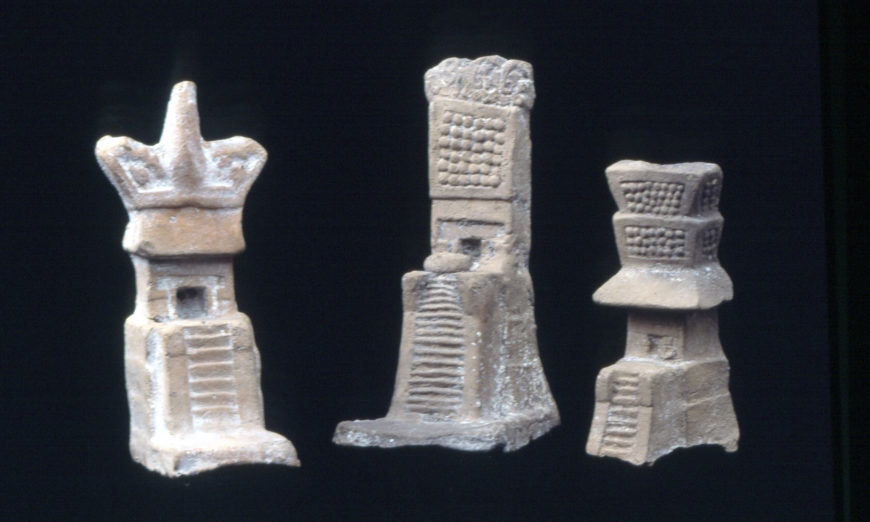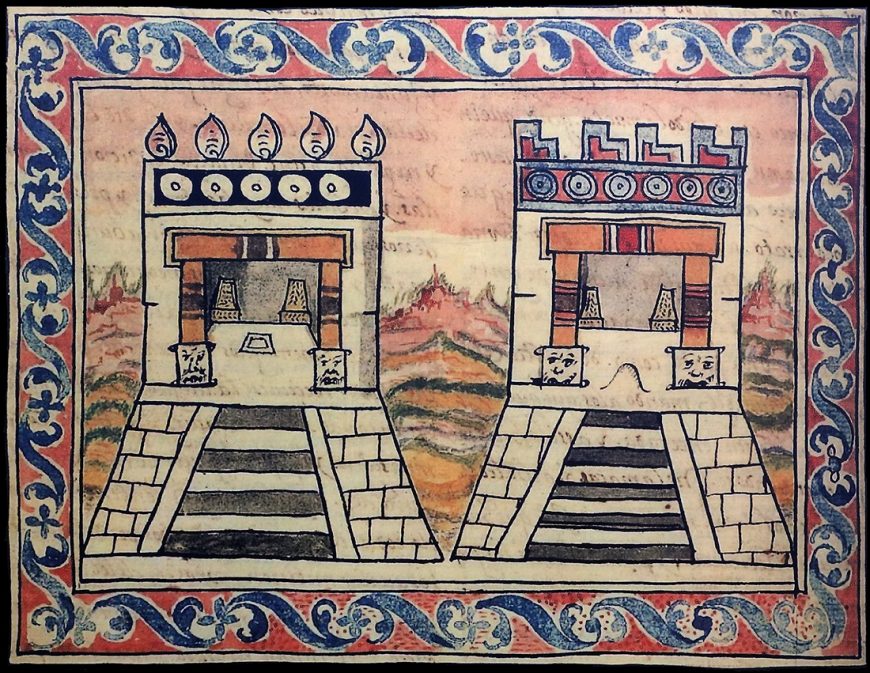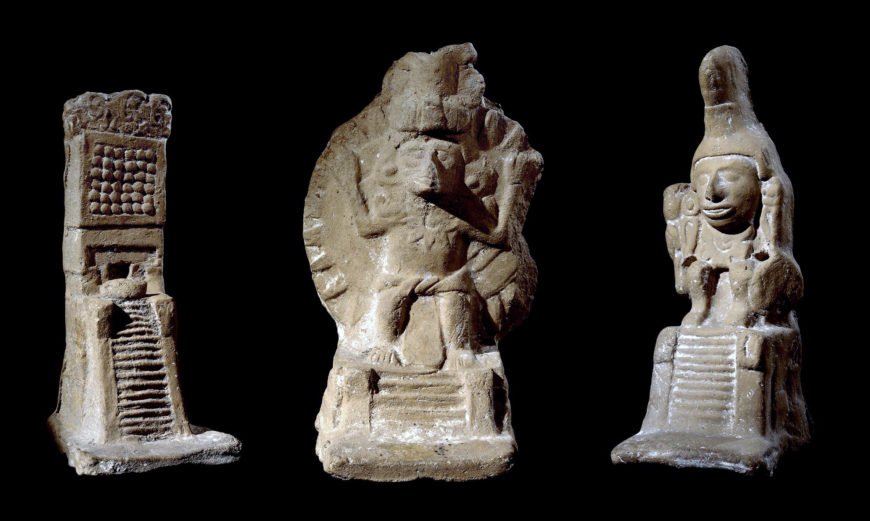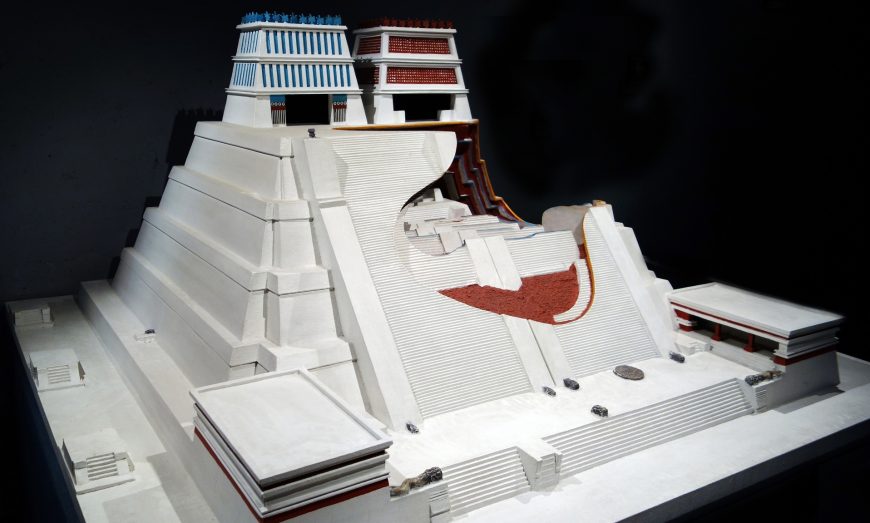
Group of pottery model temples, Mexica (Aztec), 1325–1521, from Mexico (© The Trustees of the British Museum)

Diego Durán, illustration of the Templo Mayor, from The History of the Indies of New Spain, 1579 (Biblioteca Nacional, Madrid)
Most Mexica* temples were razed to the ground by the Spaniards. However, we do know what they looked like through archaeological excavations, descriptions in sixteenth-century chronicles, and depictions in codices from the sixteenth century. These pottery models add valuable details to our knowledge of Mexica religious architecture.
Most temples consisted of a truncated, rectangular pyramid with a stairway leading to a sanctuary erected on top. The stone used for their construction was covered with stucco (plaster) and painted.

Group of pottery model temples, Mexica (Aztec), 1325–1521, from Mexico, left one: 14.7 x 10.5 cm (© The Trustees of the British Museum)
The miniature temple on the left is an example of this standard plan. A sacrificial stone can be seen on the platform in front of the shrine.
Some were round or semi-circular, like the miniature temple in the middle here. These were the temples dedicated to Quetzalcoatl, in his aspect as Ehecatl, the Wind God. The beak-shaped mask worn by the figure on top of the platform is characteristic of Ehecatl.
The Great Temple at Tenochtitlan, the Mexica capital, was a twin temple dedicated to Huitzilopochtli, the Mexica patron god (and god of war) and to Tlaloc, the Rain God. Two stairways lead to each sanctuary, the former with painted symbols in red and white and the latter in blue and white.
*The people and culture we know as ‘Aztec’ referred to themselves as the Mexica (pronounced Me-shee-ka).
© The Trustees of the British Museum


